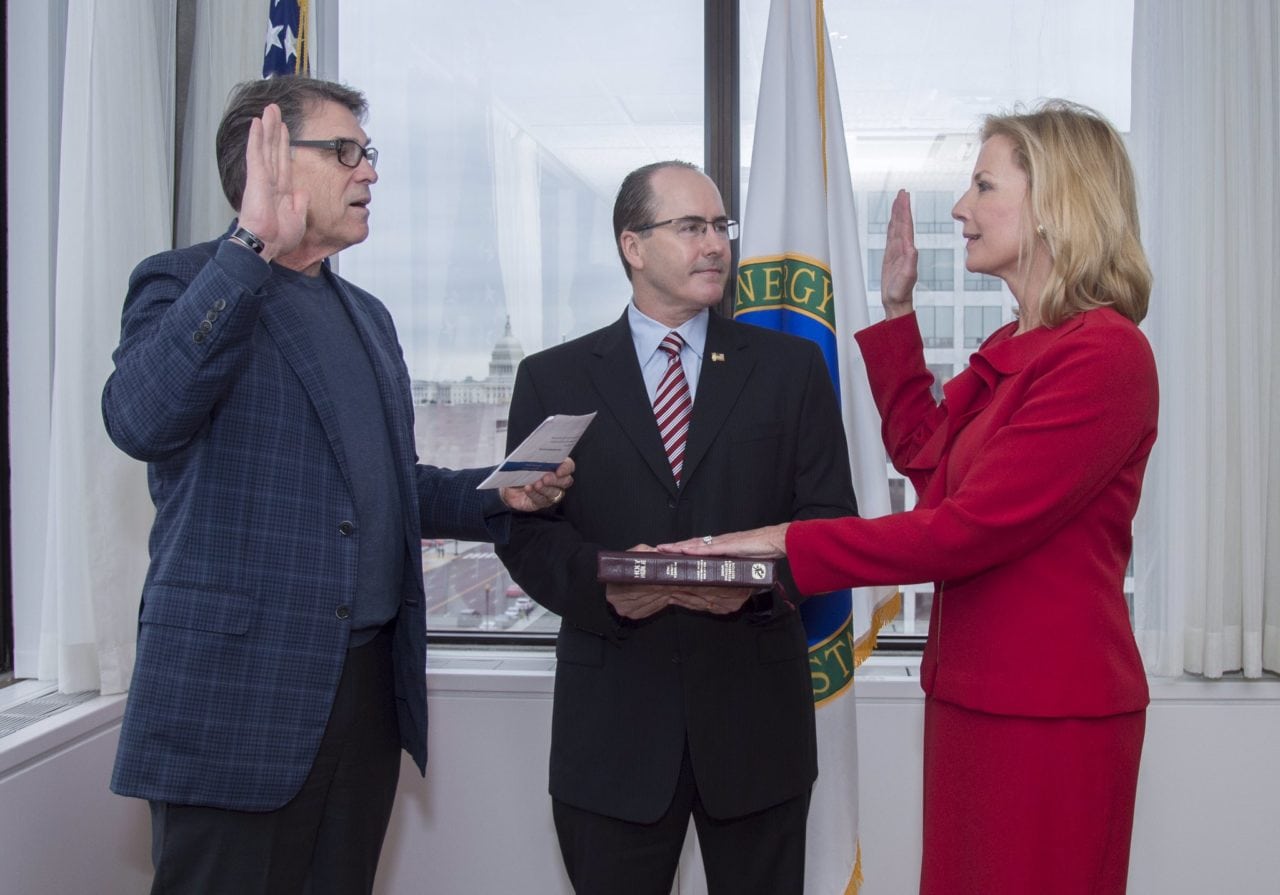
WASHINGTON — Lisa Gordon-Hagerty, head of the U.S. National Nuclear Security Administration, said Thursday she would give serious thought to remaining at her post if President Donald Trump wins a second term in office and wants her on the job.
“If the president so chooses to seek my advice and counsel, I would consider that seriously,” Gordon-Hagerty told reporters here Thursday during a breakfast hosted by the think tank-funded Defense Writers Group at the George Washington University.
Gordon-Hagerty, though, demurred on whether she would serve as deputy secretary of energy, if Trump asked. That job appears set soon to become vacant: Energy Secretary Rick Perry is resigning as of Dec. 1, and Trump on Thursday nominated DOE Deputy Secretary Dan Brouillette as his replacement
“I am honored to serve in the position that I have and I am honored to serve this administration and honored to serve the American people,” Gordon-Hagerty said. “I keep telling people, and I honestly believe it, I have the best job ever. And I am perfectly happy in the position that I’m in now.”
A former consultant and industry government affairs leader for the former U.S. Enrichment Corp., and a veteran of the National Security Council and DOE, Gordon-Hagerty has led the National Nuclear Security Administration (NNSA) for almost two years. She was confirmed by the Senate in February 2018.
It was a rare on-the-record, question-and-answer appearance for NNSA chief. Gordon-Hagerty fielded, and deflected, questions from a small group of defense-industry journalists — and one writer with the Russian news agency, Tass.
Among other things, Gordon-Hagerty said the semiautonomous Energy Department nuclear weapons agency is looking at how to triage funding for key projects in 2020, if Congress passes yet another continuing resolution that stretches the government’s 2019 budget further into the fiscal year that began Oct. 1.
“We are already rebalancing our efforts,” Gordon-Hagerty said. “We’re looking at where we can move funding insofar as CRs [continuing resolutions] will allow us to do so. We’re working very closely with OMB [the White House Office of Management and Budget] and the administration to see what we can do to continue our important programs to modernize the infrastructure as well as the stockpile and our workforce initiatives.”
The NNSA requested $16.5 billion for 2020 but is now dealing with a stopgap bill that keeps the agency funded month-to-month through Nov. 21 at the annualized rate of just over $15 billion. So far this year, partisan disagreement over Trump’s proposed southern border wall has prevented full-year defense and energy spending bills from getting votes on the Senate floor. The House has already passed annual spending bills for the NNSA and other federal branches, though without some of the funding the agency sought for its Plutonium Sustainment account.
That account, key to on-time deployment of the next generation of nuclear-tipped intercontinental ballistic missiles, is especially needy under a continuing resolution. The NNSA wanted to nearly double the plutonium budget year over year to almost $715 million in 2020, leaving headquarters with a large hat to pass around if budgets are held to 2019 levels.
The requested funds would pay for design work on a new plutonium pit-casting plant at the Savannah River Site in South Carolina that, in concert with planned upgrades to the Los Alamos National Laboratory in New Mexico, would allow the NNSA to make annually produce 80 fissile warhead cores by 2030.
The brand new cores will be for W87-1-style warheads: the business end of the planned Ground-Based Strategic Deterrent missiles that will replace the 400-strong Minuteman III fleet beginning in 2030.
Los Alamos, a historically science-first lab with little history of industrial-scale production, would begin cranking out 10 pits per year in 2024, ramping to 30 annually by 2026 and beyond. An NNSA-chartered study published in 2018 by Parsons Government Services found that Los Alamos probably will not hit 30 pits a year until 2035 or so. Gordon-Hagerty insisted here, as she has before, that the NNSA “absolutely” plans to reach 30 pits a year at Los Alamos by 2030.
On Thursday morning, the NNSA chief characterized the agency’s preferred workarounds for the fledgling Los Alamos pit plant in the same general terms that senior nuclear-weapons managers in Washington have used since the Parsons study leaked to the public about a year ago.
“We’re looking at increasing the workforce so we can send, so we can do additional throughput through surge capacity,” Gordon-Hagerty said. “We’re doing everything we possibly can to look at unique ways.”
Still, Gordon-Hagerty said, continuing a summer-long management of expectations into the second half of autumn, “we do have a very tough row to hoe.”